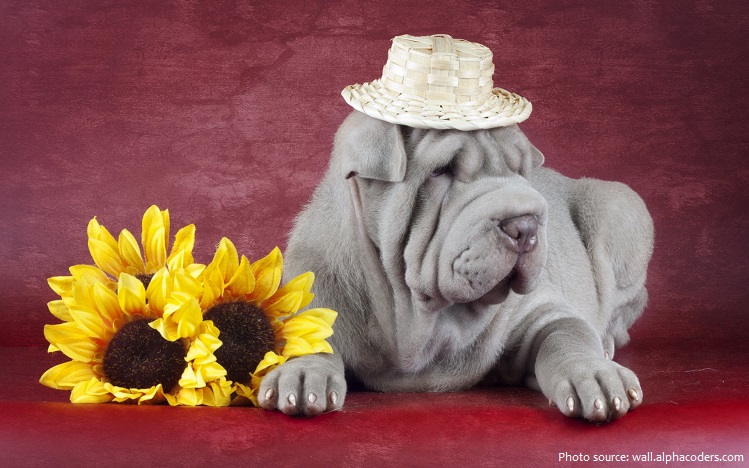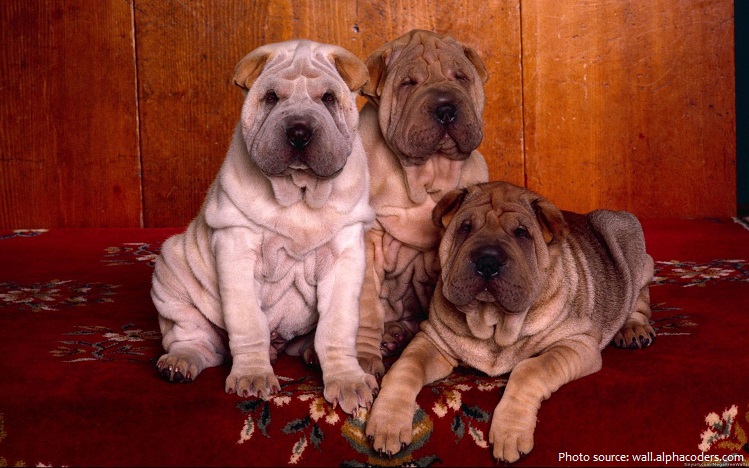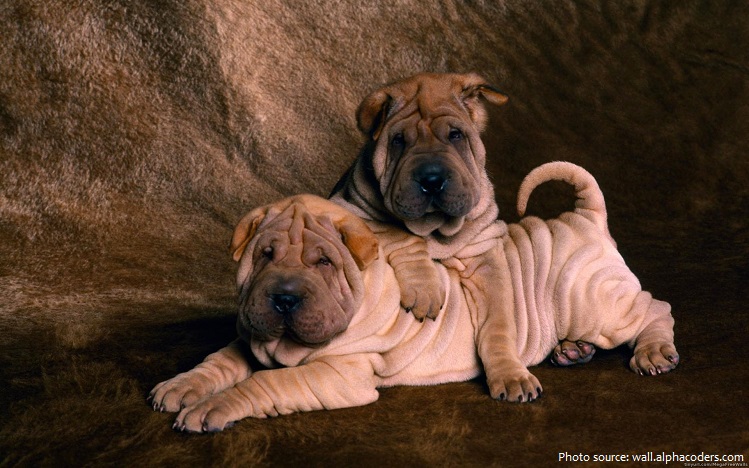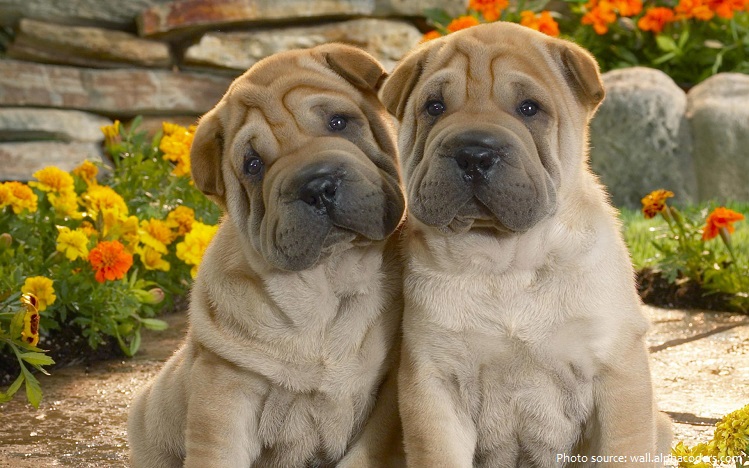
The Shar Pei is breed of dog noted for its loose skin and wrinkles.
Once considered one of the rarest dog breeds, the Chinese shar-pei has enjoyed great popularity beginning in the late 20th century, and its numbers have grown significantly.
These very intelligent dogs are known for being independent, aloof and guarded with strangers.
With their families, while not known for wanting to snuggle on your lap, they can be fiercely loyal and protective.

The average lifespan of the Shar Pei is 9 to 11 years.
Of medium size, the Shar Pei stands 45 to 50 cm (18 to 20 inches) and weighs 21 to 28 kg (45 to 60 pounds).
The compact, medium-sized Chinese Shar-Pei is an amalgam of odd physical traits: a broad ‘hippopotamus’ muzzle – a blue-black tongue; small, sunken eyes with a scowling expression – tiny triangular ears – abundant folds of loose skin about the head, neck, and shoulders – the tapered high-set tail’all blanketed by a harsh, sandpapery coat.
Shar Peis have a short, very harsh coat that can be any solid colour except white, although black, red, fawn and cream are the most common.

The breed resembles many dog breeds from the mastiff family – however, it is most closely related to spitz breeds, with the Chow Chow being its closest relative.
The breed’s name shar-pei meaning “sand-skin” – refers to the short, rough coat, which appears in a number of colours, including cream, red, or chocolate.
There are no records indicating the origins of the Shar Pei, although it closely resembles effigies of an un-wrinkled type of guard dog kept in southern China during the Han dynasty – some believe the modern breed, along with the Chow Chow, descends from these dogs.
It was believed to have been a peasant’s dog, and in the manner of peasant’s dogs in all times and places, the Shar-Pei was expected to be versatile. Chinese farmers employed these rugged, intelligent dogs as hunters, herders, and guardians of livestock against predators and rustlers.

They were also bred for their fighting prowess, and the wrinkles in their skin and roughness of their coat would have helped to prevent their opponents from getting a grip.
The Shar Pei first came to the attention of Western travelers in the 19th century, who called the breed the “Chinese fighting dog” – these dogs were not nearly as wrinkled as the modern breed and it was used by locals for dog fighting.
The breed has been identified as a basal breed that predates the emergence of the modern breeds in the 19th century.
During the communist revolution in China in the mid 20th century, their numbers dwindled so drastically that they almost became extinct.

In 1973 a Hong Kong businessman named Matgo Law appealed to the international community, in particular the American Kennel Club, to help save the breed – by 1978 the breed was named by The Guinness Book of Records as the world’s rarest breed, with only 60 remaining.
They also featured on the cover of LIFE magazine and were involved in a number of high profile ad campaigns.
The resultant publicity led to great demand in the United States for examples of the breed, and unscrupulous breeders in Hong Kong, Macau and Taiwan took to crossing their remaining purebred animals with other breeds including the Bull Terrier, Pug and Bulldog, and selling the offspring to unwitting American buyers. The results of the crossings led to a dog with a much fleshier mouth than the original breed, these dogs became known as “meat-mouth” Shar Peis, whilst the original dogs are called “bone-mouth” Shar Peis.

The breed was officially recognized by the American Kennel Club in the late ’80s. Since then, while still cherished by enthusiasts, their popularity has waned somewhat and this has been of benefit to the breed in terms of responsible breeding programs being more common, but the fallout from that time is still apparent.
In the United States, a number of breeders have selectively bred Shar Peis for a smaller size, creating what they call the Miniature Shar Pei, much to the opposition of many breeders of traditionally sized Shar Peis. Standing to a maximum 40 centimetres (16 inche), the Miniature Shar Pei is bred for both for its smaller size and increased wrinkles.
Usually, the average price of an Chinese Shar-Pei puppy from a reputable breeder is between $1,000 and $1,500, while a top-quality Shar-Pei puppy can cost as high as $2,500.